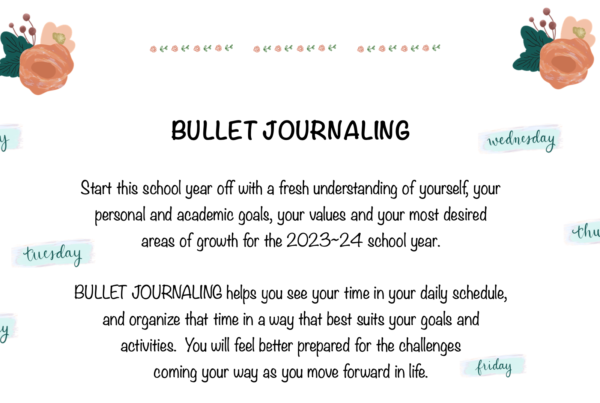Learning Beyond the Classroom: Fun and Educational Summer Tips for Kids

As the school doors close for the summer, parents often wonder how to keep the momentum of learning alive in the midst of all the sunshine and playtime. The good news is that learning doesn’t have to take a vacation. Here are some tips to ensure that your child’s curiosity continues to thrive during the summer months: 1. Explore Outdoor Learning: Take advantage of the warm weather by turning outdoor activities into learning opportunities. Visit parks, nature reserves, or botanical gardens to explore science and nature. Identify different plants and animals, and encourage your child to ask questions about the world around them. 2. Reading Adventures: Create a summer reading challenge with a variety of books that cater to your child’s interests. Set a goal together, and reward achievements with small incentives. Whether it’s a trip to the bookstore or a special treat, turning reading into a game can make it more enjoyable. 3. Educational Apps and Games: There are numerous educational apps and games designed to make learning enjoyable. Explore interactive platforms that cover subjects like math, science, and language arts. Many of these apps incorporate gamified elements, making the learning experience engaging and entertaining. 4. Creative Arts and Crafts: Encourage artistic expression through summer-themed arts and crafts projects. This not only enhances creativity but also develops fine motor skills. Create a DIY art corner and let your child’s imagination run wild with various materials. 5. Cooking and Math: Turn the kitchen into a learning laboratory. Involve your child in measuring ingredients, following recipes, and understanding the science behind cooking. It’s a delicious way to reinforce math skills and introduce concepts like fractions and measurements. 6. Science Experiments: Spark scientific curiosity by conducting simple experiments at home. Whether it’s creating a volcano with baking soda and vinegar or exploring the principles of buoyancy with a sink-or-float experiment, hands-on activities make learning fun. 7. Family Field Trips: Plan educational field trips to museums, science centers, or historical sites. Many places offer special summer programs for kids. These outings not only provide valuable learning experiences but also create lasting family memories. 8. Journaling and Storytelling: Encourage your child to keep a summer journal where they can document their adventures, thoughts, and experiences. This not only improves writing skills but also serves as a cherished keepsake. Consider a weekly storytelling session where your child can share their journal entries. 9. Math in Everyday Life: Integrate math into daily activities. Whether it’s counting steps during a walk, measuring ingredients while cooking, or budgeting for a summer treat, incorporating math into everyday life makes it more practical and relatable. 10. Community Involvement: Engage in community service or volunteer work together. This fosters a sense of responsibility and social awareness. It also provides opportunities to learn about different cultures, social issues, and the importance of giving back. Conclusion: Embracing a Summer of Learning Fun Summer is a fantastic time for kids to explore, discover, and learn in ways that may not be possible within the confines of a classroom. By infusing learning into everyday activities and maintaining a spirit of curiosity, you can ensure that your child’s educational journey continues to flourish throughout the summer months. After all, the best lessons are often learned through the joy of exploration and play. Happy summer learning!
Navigating the Learning Landscape with ADHD: Unveiling the Challenges and Strategies

The journey of learning is unique for each individual, shaped by various factors that contribute to one’s cognitive and emotional development. However, for those navigating the terrain with Attention-Deficit/Hyperactivity Disorder (ADHD), the path can be peppered with distinct challenges that require a nuanced understanding. In this blog post, we’ll explore how ADHD affects learning and shed light on strategies that can pave the way for a more supportive educational experience. Attention Challenges ADHD is often characterized by difficulties in sustaining attention. In a traditional learning environment, where focus is key, individuals with ADHD may find it challenging to stay engaged in tasks for extended periods. Distractions, both internal and external, can divert attention away from the intended learning objectives. Strategy: Implementing structured routines, breaking down tasks into manageable chunks, and incorporating interactive learning methods can help maintain focus. Additionally, providing a quiet and minimally distracting learning environment can create a conducive space for concentration. Impulsivity Impulsivity is another hallmark of ADHD, making it difficult for individuals to think before acting. In a classroom setting, impulsive behavior can disrupt the flow of lessons and hinder effective learning for both the individual and their peers. Strategy: Teaching and encouraging self-monitoring techniques can empower individuals with ADHD to pause and reflect before responding impulsively. Introducing mindfulness practices can also contribute to increased self-awareness and better impulse control. Working Memory Challenges Individuals with ADHD may experience difficulties with working memory, affecting their ability to retain and manipulate information over short periods. This can pose challenges in tasks that require sequential processing and quick recall. Strategy: Employing visual aids, such as charts, diagrams, and graphic organizers, can enhance memory retention. Additionally, incorporating repetition and review into the learning process can reinforce key concepts and improve information retention. Hyperactivity The hyperactive component of ADHD can manifest as excessive fidgeting, restlessness, and difficulty sitting still. In a classroom setting, this behavior can be misconstrued as disruptive, leading to potential social and academic challenges. Strategy: Providing opportunities for movement breaks and incorporating hands-on learning activities can channel excess energy in a positive direction. Flexible seating arrangements that accommodate different learning styles can also create a more inclusive and comfortable environment. Conclusion Understanding how ADHD affects learning is the first step towards creating an inclusive and supportive educational experience. By embracing tailored strategies that cater to the unique needs of individuals with ADHD, educators and caregivers can empower them to navigate the learning landscape more effectively. Through a collaborative effort, we can ensure that every learner, regardless of their cognitive profile, has the opportunity to thrive and unlock their full potential.
Nurturing Young Writers: A Guide to Cultivating Your Child’s Writing Skills

Introduction As a parent, you play a crucial role in shaping your child’s future, and one of the essential skills you can help them develop is writing. Writing not only enhances communication but also fosters creativity and critical thinking. In this blog, we’ll explore some practical tips to assist your child in honing their writing skills and, more importantly, making the process enjoyable. Create a Writing-Friendly Environment Set the stage for creativity by providing a comfortable and inspiring writing space. Ensure your child has access to paper, pens, and other writing tools. Consider placing a small desk or a cozy nook where they can retreat to unleash their imagination. Encourage Daily Journaling Encourage your child to keep a journal. Whether it’s a diary of daily activities, thoughts, or even fictional stories, journaling helps improve writing fluency and creativity. Make it a habit for your child to jot down their thoughts and experiences regularly. Read Together Reading is the foundation of good writing. Introduce your child to a variety of books and genres. Reading together not only enhances their vocabulary but also exposes them to different writing styles. Discuss the stories, characters, and plot elements to stimulate their analytical thinking. Be a Writing Role Model Children often learn by example. Let them see you engaging in writing activities, whether it’s composing emails, creating shopping lists, or even writing a short story. Demonstrating your own love for writing can inspire and motivate them to follow suit. Provide Constructive Feedback When your child shares their writing with you, offer constructive feedback. Focus on the positive aspects first, praising their effort and creativity. Then, gently suggest areas for improvement. Encourage them to revise and edit their work, teaching them that writing is an evolving process. Explore Writing Prompts Introduce fun and interesting writing prompts to spark their creativity. You can find various prompts online or create your own based on your child’s interests. These prompts can serve as fantastic starting points for short stories, essays, or even imaginative pieces. Make Writing a Collaborative Activity Collaborative writing can be a great way to make the process enjoyable. Engage in writing activities together, whether it’s co-authoring a story or creating a family newsletter. Collaboration not only enhances their writing skills but also strengthens the parent-child bond. Celebrate Achievements Celebrate your child’s writing achievements, no matter how small. Display their work on a dedicated “writing wall” or create a portfolio to showcase their progress. Positive reinforcement boosts their confidence and encourages them to continue developing their skills. Conclusion By fostering a love for writing and providing the right support, you can help your child become a confident and skilled writer. Remember that the journey is as important as the destination, so enjoy the process together and watch as your child’s writing skills flourish.
Reading Comprehension

Absolutely, fostering strong reading comprehension skills in children is crucial. Here are some blog tips to help parents support their child’s reading comprehension: Create a Reading Routine Establish a consistent reading routine at home. Set aside dedicated time for reading each day, creating a comfortable and quiet environment. Choose Age-Appropriate Books Select books that align with your child’s age and interests. This ensures they stay engaged and can relate to the content, making comprehension more enjoyable. Ask Questions Before, During, and After Reading Encourage active reading by asking questions. Before reading, discuss the title and cover. During reading, inquire about characters, plot, and predictions. Afterward, discuss the story’s main points. Build Vocabulary Use Visual Aids Utilize pictures and illustrations in books to enhance understanding. Encourage your child to describe what they see and connect it to the text. Make Connections Help your child relate the story to their own experiences. This personal connection can deepen comprehension and make the reading experience more meaningful. Encourage Summarization Teach your child to summarize what they’ve read in their own words. This helps reinforce understanding and promotes the ability to extract key information. Read Aloud Together Reading aloud together allows you to model proper pronunciation, expression, and intonation. It also provides an opportunity for discussion as you progress through the story. Visit the Library Regular library visits expose your child to a variety of books and genres. This broadens their reading experience and introduces them to different writing styles. Be Patient and Supportive Every child progresses at their own pace. Be patient, offer positive reinforcement, and celebrate their achievements. Building strong reading comprehension takes time and encouragement. Remember, the goal is to make reading an enjoyable and enriching experience for your child.
Empowering Parents: A Guide to Supporting Your Child Through Bullying

Introduction Bullying can have a profound impact on a child’s well-being, affecting their confidence, self-esteem, and overall mental health. As a parent, it’s crucial to be proactive in addressing and preventing bullying. Here’s a guide on how you can support your child through this challenging experience. Open Communication Create a safe and open space for your child to share their feelings. Encourage them to talk about their experiences, and listen without judgment. It’s essential to understand the situation from their perspective before taking any action. Educate Your Child Teach your child about the different forms of bullying, such as verbal, physical, and cyberbullying. Help them recognize when they are being mistreated and empower them with the knowledge of how to respond assertively. Foster Self-Esteem Building your child’s self-esteem is a powerful defense against bullying. Encourage their strengths, talents, and interests. Help them develop a positive self-image so they can face challenges with resilience. Be Proactive Stay involved in your child’s life and school activities. Establish a good relationship with teachers, school staff, and other parents. This will make it easier to identify signs of bullying early on and address the issue collaboratively. Teach Conflict Resolution Equip your child with conflict resolution skills, emphasizing the importance of assertiveness, empathy, and effective communication. These skills will empower them to handle bullying situations constructively. Set Boundaries on Technology In the digital age, cyberbullying has become a prevalent issue. Set clear guidelines on your child’s use of technology, monitor their online activities, and encourage them to report any online harassment. Role-Playing Practice scenarios with your child where they can assertively respond to bullying. Role-playing helps build their confidence and equips them with the tools to navigate challenging situations. Involve School Authorities If your child is facing bullying at school, communicate with teachers, counselors, and administrators. Work together to develop a plan to address the issue, ensuring a safe and supportive learning environment for your child. Encourage Peer Relationships Facilitate opportunities for your child to build positive relationships with their peers. Friendships can provide a strong support system and diminish the impact of bullying. Seek Professional Help If the bullying persists or escalates, consider seeking the assistance of mental health professionals. A counselor or therapist can provide additional support for your child and help them navigate the emotional challenges associated with bullying. Conclusion As a parent, your role in supporting your child through bullying is instrumental. By fostering open communication, building self-esteem, and collaborating with school authorities, you can empower your child to face challenges confidently and develop resilience in the face of adversity. Together, we can create a world where every child feels safe, supported, and valued.
Learn About Bullet Journaling

Take part in our group about Bullet Journaling.
New Online Resources

Here are a few new links to some new online resources. Podcast: Students with Dyslexia can learn to read! Let’s identify early and intervene with Orton-Gillingham so they have the opportunity to achieve their goals. Podcast about self-talk and self-care CHADD Articles Principles for Parenting a Girl with ADHD Executive Skills Coaching What Parents Should Know By Peg Dawson, co-author Coaching Students with Executive Skills Deficits
Study Skills For Early Learning

It can be very motivating to complete tasks and achieve goals. This positive reinforcement can help the learner become more focused and committed to the task at hand. It is important to remember that different learners have different needs and strategies that work best for them. Some learners need more structure and support, while others prefer more independence and freedom to explore. The following tips can help facilitate task completion and goal achievement: When a learner knows what is expected of them and what the goal is, they are more likely to be successful. Establishing clear and concise expectations helps to ensure that there is a shared understanding between the learner and the teacher. This can help the learner stay focused and motivated. When the task seems less daunting, the learner is more likely to be successful. Instructing the learner on how to complete the task and providing feedback on their progress will help them stay on track. Acknowledge the learner’s accomplishments and provide encouragement along the way. This will help keep them motivated and focused. This can help the learner stay focused and motivated. When there is a sense of urgency, the learner is more likely to be successful. Giving the learner choices can help them feel more in control. This can help boost their motivation and increase their focus. Using a variety of strategies can help keep the learner interested and engaged. This can help increase their focus and motivation. The environment can play a big role in how well the learner performs. If the learner is more comfortable in a certain environment, then adjusting to that environment can help them be more successful. The strategies listed above can be helpful for learners of all ages. It is important to remember that what works for one learner may not work for another. So, it is important to be flexible and try different strategies until you find what works best for the individual learner. Study skills are important for elementary aged kids so they can succeed in school. There are many ways to help kids develop good study habits, including helping them create a study schedule, teaching them how to focus, and helping them learn how to take notes. Kids who develop good study skills early in life will be more likely to succeed in school and in life.


